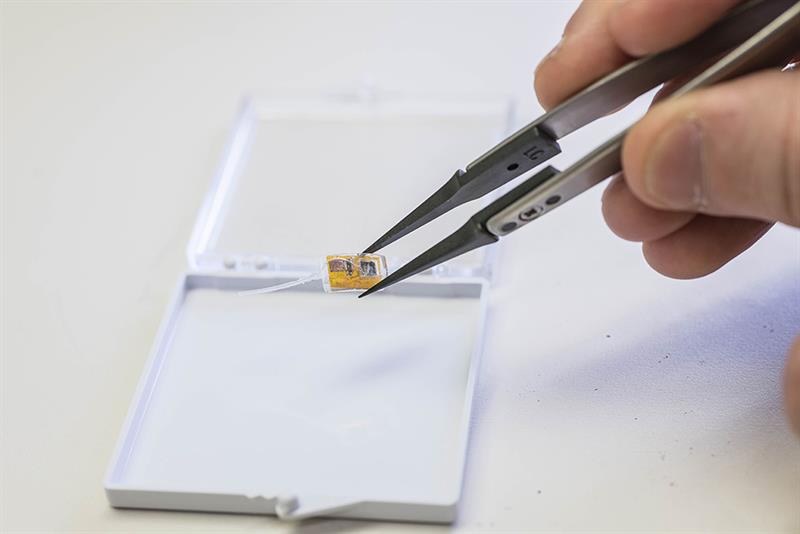In 2010, STMicroelectronics introduced a ‘contact lens’ with an embedded wireless sensor for eye pressure monitoring.
Then in 2016, NE reported on a number of technologies that aimed to assist with the visually impaired including a set of glasses which scan the scene in front of the user using a camera and ultrasonic distance sensor, and a retinal implant technology that implements an augmented reality display system.
And, more recently, NE spoke about a bionic eye which is able to create a perception of vision.
Today, a team from Caltech has developed a miniaturised, highly sensitive, implantable pressure sensor which wirelessly sends data about the eye’s health to the patient and/or doctor – similar to the 2010 creation mentioned above. The revolutionary aspect of this device, the research say, is that it is able to reside in the human eye for years. Other attempts to build similar devices have been stymied by the harsh environment inside the human body, according to the researchers.
The Caltech device is designed to monitor eye pressure continuously, which avoids the typical eye procedure that requires a local anesthesia. The on-going monitoring will also, hopefully, lead to catching elevated eye pressure early, allowing therapy to be modified when required.
The device is a little smaller than a dime and is implanted in a spot on the white of the eye where it will not interfere with vision, the researchers add. It consists of a pressure sensor, control circuitry, and an antenna. The implant has no battery, making it small and long lasting. During a reading, radio waves from a handheld scanner are received by the antenna and generate a small voltage that temporarily powers up the device, which then takes a pressure reading and sends the signal back to the reader using the same antenna.
The Caltech team encapsulated their device in a specialised coating that consists of a silicone-oil bubble surrounded by a biocompatible polymer called parylene, which allows the device to reside in the eye for long periods of time.
"The encapsulation technique, which we call 'parylene-on-oil,' is our key breakthrough," the researchers say. "The combination of liquid silicone oil and parylene shows far greater pressure reading stability and corrosion protection than just silicone gel or parylene alone."

The team believe the device could also be modified to provide treatment by adding a valve that would release small amounts of fluid as tears, when pressure rises too high.
The team explain they would create a 'smart' glaucoma (an eye disease that affects 65m people worldwide) drainage device, in which a single implant could measure eye pressure and relieve excessive pressure.
In the long term, the team say they would like to build a closed-loop system, which is able to adjust the flow through the valve automatically depending on the pressure reading.













